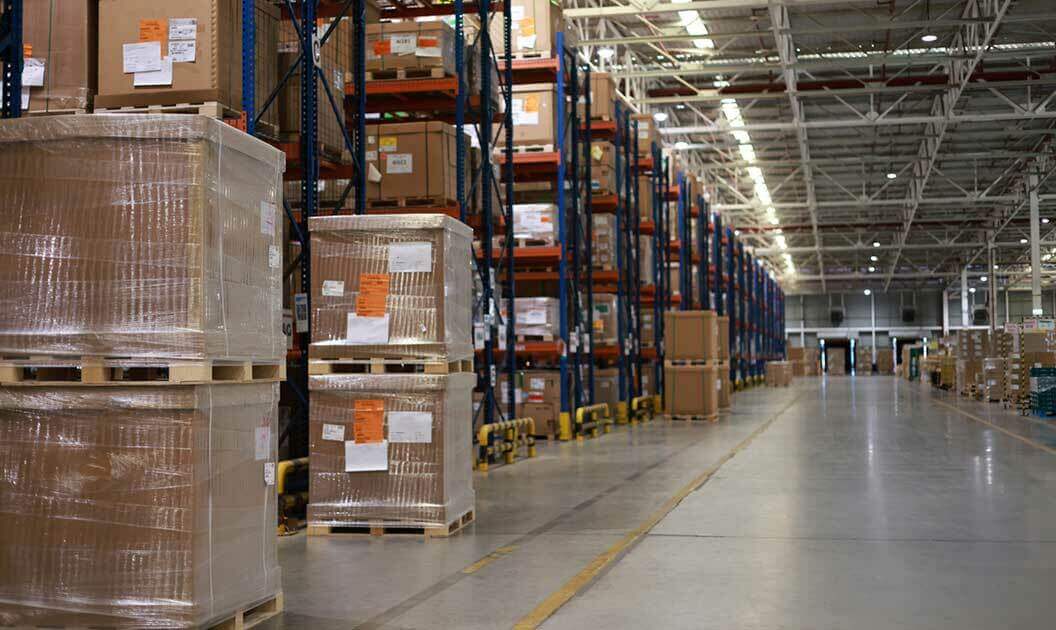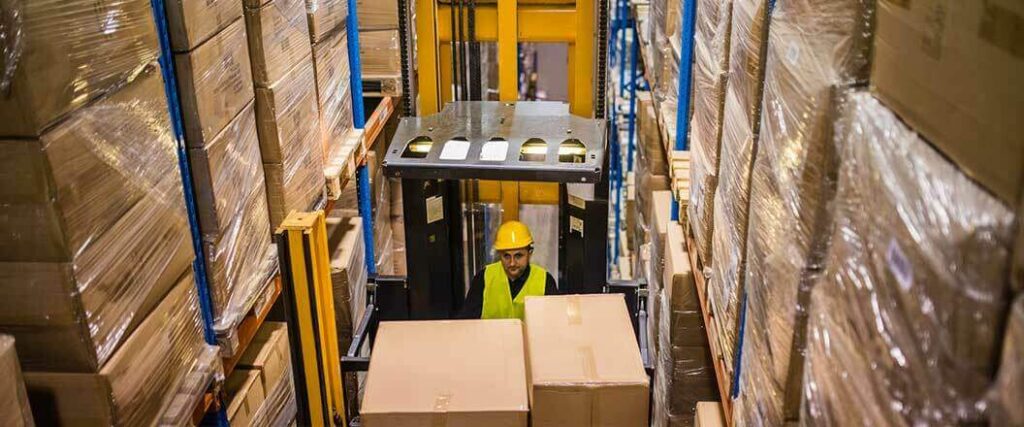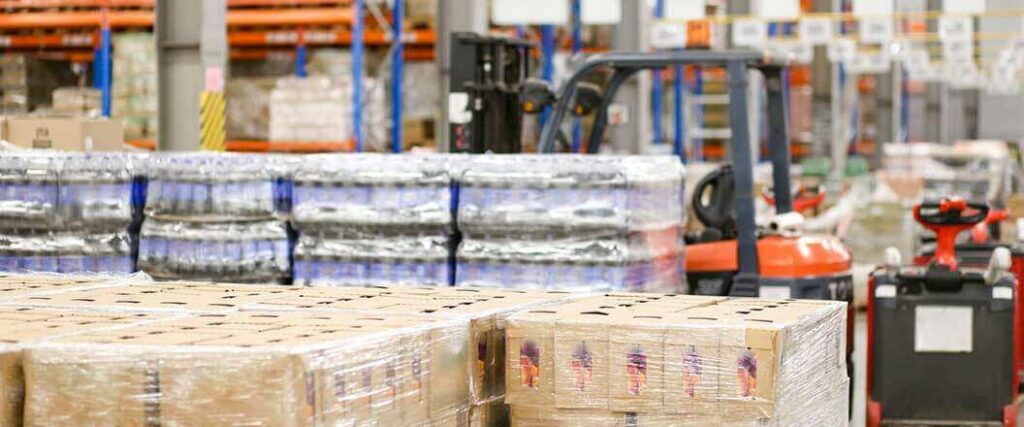
 Copy URL to Clipboard
Copy URL to Clipboard
Retail shipping warehouses serve as a crucial component of a successful business. These facilities streamline the storage and distribution of products, ensuring that items reach their destination efficiently and in good condition. Without a warehouse, businesses could face numerous challenges such as delayed deliveries, mismanaged inventory, or even increased costs.
The International Warehouse Logistics Association (IWLA) defines a retail shipping warehouse as a specialized building focused on the storage, handling, and dispatching of goods specifically for the retail sector. These facilities increase storage space, centralize products, and improve the safety of freight that’s being held.
There are many details to consider when it comes to retail shipping warehouses. We’ll show you everything you need to know that will help you use these facilities to your advantage.
Table of Contents
At its core, a retail shipping warehouse is designed to store products meant for retail outlets and to ship them off when items have been ordered. These facilities use at least one type of warehouse storage system to hold freight. This helps optimize the retail warehouse space and improve operational efficiency.
To ensure the supply chain functions smoothly, these facilities are often located near ocean ports, airports, and trucking hubs. The strategic location of retail warehouse supply buildings allows for quick transportation when it's time to move store inventory. As a result, freight arrives much faster.
Retail warehouse and distribution shipping centers employ a large quantity of workers. This allows the facilities to process large amounts of freight. To help make their jobs easier, workers use a variety of inventory management systems to assist them in their tasks.
As more retailers have opened online stores, the need for retail shipping warehouses have become more important. We have a data showing the amount of sales in mobile ecommerce in the U.S. over the past two years.
| Year | Sales |
| 2021 | $360 Billion |
| 2022 | $431.4 Billion |
Provided by Forbes
As the number shows, consumers all over the U.S. are turning to online stores for the products they need. The growth of ecommerce is not likely to slow down. Sales are expected to be $604.5 billion in 2023. With ecommerce rising, the need for retail shipping warehouses is projected to grow with it.

On top of shipping and holding onto products, retail store supply warehouses perform other important functions.
These include:
Without these additional processes, warehouses wouldn’t perform as well. We’ll discuss each of these functions in-length to better demonstrate how each one works.
Before a retail distribution fulfillment warehouse can store freight, goods must be received from inbound trucks and then sorted appropriately. As goods arrive, the details about them are accurately documented.
This includes noting the:
Facility workers might use electronic devices to log this information or manual checklists. Retail warehouse providers will conduct a quality inspection of the goods that come into the building. If discrepancies are found, they're either returned to the supplier or marked accordingly.
Once inspected, goods are sorted based on various criteria, including:.
Sorting ensures that goods are stored and ultimately shipped to the right customer. After this process has been completed, details are entered into the warehouse management system (WMS) being used.
After workers receive and sort freight, the next critical phase in a retail shipping warehouse is storage. Using a retail specific WMS, workers inside the facility place freight in the correct storage spaces. Each type of cargo has a specialized holding system.
Take these types of products for example:
Finding the right place to store cargo is essential for the operation of an efficient warehouse. Goods need to be safe and accessible in their designated area until being shipped to another destination.
When an online order comes into a shipping warehouse, it’s time for picking and packing, the first step of fulfillment. Pick and Pack services are when employees pick the freight up from where it’s stored and begin packing it into boxes. For bulk orders, freight items might be palletized after being packed.
There are a few different ways that workers will pick items, such as:
After the items have been picked, the boxes are palletized. Here, the packages are stacked onto the platform and secured using wraps. In some cases, straps will be used to add extra security for the palletized freight.
Thanks to technological systems, retail warehouse automation allows workers to pick and pack much more efficiently. In some cases, automated conveyors can transport boxes from the storage area to packing stations.
Transportation is the grand finale of a retail shipping warehouse operation. Ensuring the smooth and efficient movement of goods is paramount for customer satisfaction and business reputation. The shipping process starts with goods being loaded into the appropriate trailer or vehicle.
The type of vehicle used to transport the cargo will vary based on the shipment. Freight traveling the last mile will usually be moved inside a delivery truck, but a dry van a trailer is used for longer haul shipments. Since retail orders tend to ship in bulk amounts, it’s common for the final mile to also be a large dry van.
Customers and businesses can monitor the journey of an order from the warehouse using a tracking number. Many companies send out automated notifications at various stages of the shipping process to keep customers informed.

No business is exactly like another. Fortunately, retail shipping warehouse and fulfillment centers come in different variations that companies can explore.
These include:
Businesses should consider each one carefully to find what works best for their unique operations.
A public warehouse is a facility that offers its services to multiple businesses simultaneously. They’re typically owned and operated by government entities and are made available to both private and public companies. Since multiple businesses utilize the facility, the resources offered are shared.
This includes services such as:
By having a share in resources, individual costs for businesses using public retail warehouse space is reduced significantly. Many of these facilities offer short-term lease agreements, making it easier for businesses to adapt without being tied to long-term commitments. As a result, businesses can adjust to cost fluctuations much more easily.
Public warehouses are a great option for small businesses that are just starting out in their respective industry. However, enterprises that have higher levels of demand may want to look for other facility options.
Essentially, a private warehouse is a storage facility owned and operated by the company that owns the goods stored inside. This means a business has full control over the operations, layout, and management of the facility.
One advantages of a private warehouse is the ability companies have to customize the space for their needs.
This can include using:
A private retail shipping warehouse is typically used by larger businesses with multiple locations. Setting up these facilities requires a significant capital investment, from acquiring land or a building to equipping the space. The burden of maintenance, security, and operational costs rests solely on the business.
Companies that are bigger in scale can afford these expenses. Therefore, smaller retail businesses might want to consider other warehousing avenues.
A cooperative warehouse is owned and operated collectively by a group of businesses or manufacturers. Instead of a single entity shouldering all the responsibilities and costs, a group collaboratively manages the facility.
It’s typical for groups to be made up of companies that frequently collaborate or are otherwise legally affiliated.
The costs of using the warehouse are distributed between all the businesses. This approach reduces individual financial burdens, but keeps the space semi-private.
Companies running a successful cooperative must discuss:
Storage space is allocated based on each member's needs, but always with a sense of equity to ensure fairness among the participating businesses. Cooperative retail supply warehouses will help all businesses save on expenses.
A bonded warehouse is a secure storage facility where imported goods can be stored. Government authorities have jurisdiction over these buildings. They offer importers a bond to rent out the space they require.
One benefit of using these facilities is that companies will only have to pay customs duties after these goods have been shipped from the building. It can take a considerable amount of time for imports to clear customs. Bonded warehouses provide a short-term tax shelter for imported products during these proceedings.
Goods can be stored in a bonded warehouse for a specified time, allowing businesses flexibility when they pay duties or re-export products. According to Customs and Border Protection (CBP), companies can keep their goods in one of these facilities for up to 5 years after importation.
Find out more by checking out “What is a Bonded Warehouse? The Duty Free Storage Solution”.
A consolidation warehouse is a specialized facility where smaller shipments from multiple suppliers are combined into larger loads and sent to the same location.
Two distinct functions of these buildings include:
Once these shipments arrive, they are sorted and grouped based on their final destination. The goal is to consolidate goods going to the same place. After the consolidation process, the larger, grouped shipments are dispatched to the respective destinations. Consolidation retail shipping warehouses are very useful for businesses that have only a small amount of products to sell.
If you’re not sure how much warehouse space you need, then our article can help you.

Storing and shipping orders is very challenging for businesses. Fortunately, retail shipping warehouses help businesses keep up on their order fulfillment operations.
By using these facilities, expanding retail companies can gain access to :
Retail shipping warehouses are specifically designed to make the most out of every square inch. With so many types of storage systems, goods of all varieties will have room to fit inside one of these buildings.
Many retail shipping warehouses come equipped with advanced inventory management systems, ensuring real-time tracking and efficient order processing. As we’ve noted, these programs help workers perform their tasks more efficiently.
A retail shipping warehouse can also help with optimizing space for businesses. The modern warehouse is designed to handle frequency of product movement, ensuring that high-turnover items are easily accessible.
Shipping retail distribution centers serve as centralized location for a company’s freight. Instead of scattering inventory across multiple locations, the warehouses provide a singular space where all products can be stored, tracked, and managed.
Finally, retail shipping warehouses ensure the security of freight that’s being stored. Many facilities are equipped with state-of-the-art CCTV systems that offer round-the-clock surveillance, ensuring every corner is continuously monitored. Electronic entry systems record the details of everyone who enters and exits the facility, providing an audit trail that can be crucial in case of discrepancies.
As we've reviewed the dynamics of retail shipping warehouses, it's clear how pivotal they are in elevating the retail experience. But navigating the complexities of storing and transporting freight can’t be a solo endeavor. With Fulfillment and Distribution by your side, you've got a dedicated partner who understands the inner workings of the industry.
Services that you can take advantage of include:
Isn't it time to elevate your retail business with top-tier fulfillment services? Call us today at (866) 989-3082 or fill out a risk-free quote for any of the services we offer.
